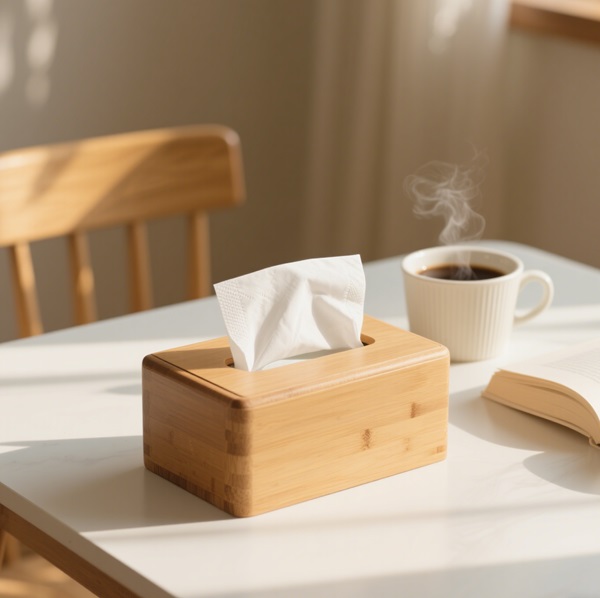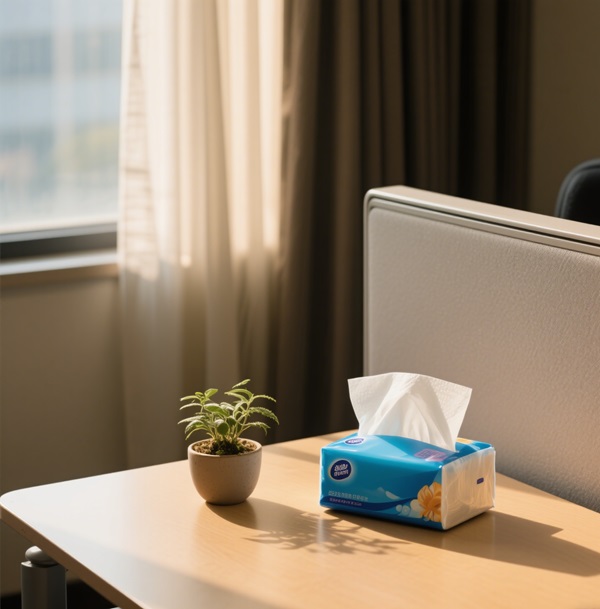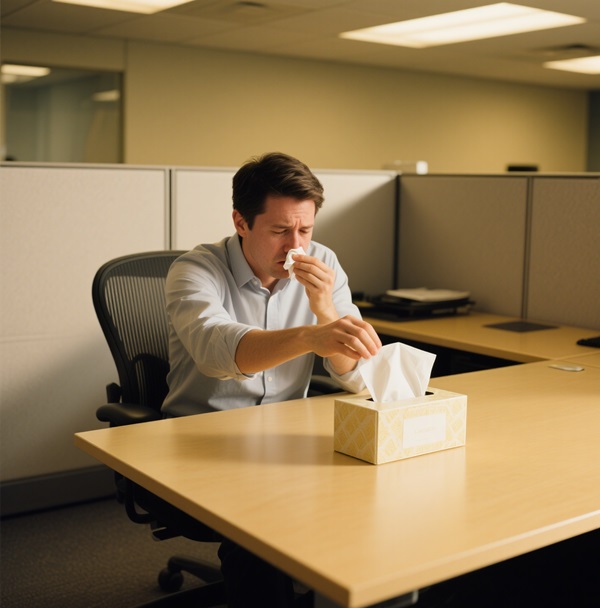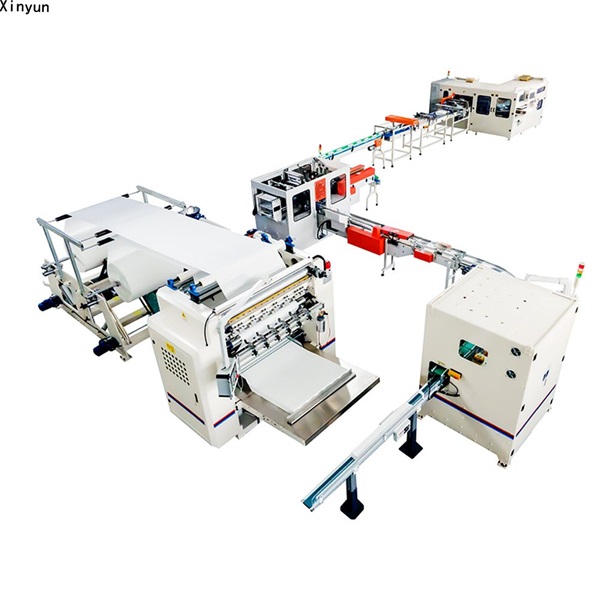Copyright © 2025 Fujian Xinyun Machinery Development Co.,Ltd. All rights reserved. Site Map
Facial tissue and toilet paper are both everyday essentials, but they serve very different purposes. While toilet paper is primarily used in bathrooms, facial tissue offers broader functionality, higher comfort, and better hygiene. In this article, we'll explore five reasons why facial tissue is often the preferred choice—not just for personal use, but in shared, public, and commercial spaces as well.
Facial tissue is designed specifically for delicate areas like the nose and face. Its texture is much smoother compared to toilet paper, which can feel rough, especially during repeated use in times of allergies or colds. For people who blow their nose multiple times a day, the difference is instantly noticeable.

Many facial tissues also include ingredients such as aloe vera, vitamin E, or lanolin. These additives not only cushion the skin but also prevent chapping and redness. This is especially helpful during winter months, when the combination of cold air and runny noses makes skin more vulnerable to damage.
Toilet paper, while functional for its primary use, simply lacks this level of consideration for sensitive skin. Its design prioritizes strength over feel, which makes it a poor substitute for facial wiping. Using it too frequently on the face can lead to irritation or even small abrasions.
In environments such as schools, hospitals, or care homes, using facial tissue becomes more than just a comfort-based decision—it's a necessity for promoting skin wellness and minimizing discomfort among vulnerable populations.
Facial tissue is engineered to retain its form better when exposed to moisture. Unlike toilet paper, which can quickly dissolve upon contact with liquid, facial tissues are designed with multiple plies and reinforced fibers that stay intact even when damp.
This structural advantage makes facial tissue ideal for mopping up tears, blotting facial oil, or dabbing small spills—tasks where toilet paper would fall apart. Whether you're applying makeup, cleaning smudges off a phone screen, or dealing with minor kitchen messes, facial tissue gets the job done cleanly and efficiently.
In office environments, facial tissue is often kept at desks to handle light spills on keyboards or to clean eyeglasses. These are small but frequent moments where durability matters, and where toilet paper would likely tear, crumble, or leave behind lint.

Parents also appreciate this feature. When you're caring for toddlers who make frequent messes, having tissues that stay strong while wet can make diaper changes and snack-time cleanup much easier. Many modern facial tissues are also biodegradable, offering environmental peace of mind without sacrificing performance.
Hygiene is a growing concern, especially in shared public spaces. Facial tissues are typically packaged to reduce contamination—whether through pop-up boxes, pocket pouches, or travel-size packs. These formats allow for one-at-a-time dispensing, minimizing contact with unused sheets and keeping the rest of the pack clean.
Toilet paper, in contrast, is usually exposed on rolls and not intended for hygienic sharing. Grabbing a piece often requires touching the roll itself or tearing against a surface others have used. In shared environments like public restrooms, that creates a real sanitation concern.
Facial tissue pouches are sealed, compact, and easy to store in handbags, backpacks, or glove compartments. They're protected from dust, humidity, and contact with other items, which helps ensure the user gets a clean, dry sheet every time.
Restaurants and reception desks often place facial tissue on tables or counters. This gesture shows customers that cleanliness and convenience are prioritized. Offering toilet paper in the same setting would be inappropriate and even off-putting. Social cues matter—and facial tissue respects those unspoken boundaries.
One of the strongest advantages of facial tissue is its adaptability. While it's great for wiping noses, that's only the beginning. Facial tissue works well as a quick blotting paper for makeup, a temporary coaster, a surface cleaner for phone screens, or even a soft napkin substitute during informal meals.
This versatility is why facial tissue boxes are common in living rooms, bedrooms, cars, and even restaurants. It serves multiple roles throughout the day, quietly solving problems where a cloth or towel might be too much, and where toilet paper would feel inappropriate.
In beauty salons, for example, facial tissues are used during facials, makeup applications, or to clean up minor spills. They're preferred over paper towels because they're softer, less abrasive, and more aesthetically appropriate. Even photographers use them to clean lenses without scratching the glass.
Additionally, for parents and teachers, facial tissue can serve as an emergency solution for runny noses, cleaning sticky fingers, or crafting. Its presence in multipurpose roles makes it indispensable, especially in settings where quick, sanitary responses are needed.

Unlike toilet paper, facial tissue is designed to be seen. Its packaging often features decorative patterns, sleek finishes, or minimalistic styles that complement modern interior design. A box of facial tissue on a desk or nightstand doesn't raise eyebrows—it blends in.
More than aesthetics, its presentation carries social significance. Offering someone a facial tissue is a considerate, polite act. Offering them toilet paper? Socially uncomfortable at best.
This matters particularly in commercial environments. Offices, clinics, salons, or hotels often display facial tissue as part of the setting. It signals readiness, cleanliness, and hospitality. In meetings or consultations, a box of tissue allows for a quick dab of sweat, a sneeze, or a tear—without needing to ask or search.
Even in high-end vehicles, facial tissue packs are integrated into dashboard compartments or seatback storage. Their presence communicates care and thoughtfulness in a way that enhances brand image and customer experience.
With the growing expectations for quality, design, and hygiene, businesses across industries are raising their standards when it comes to tissue products. Whether it's a boutique hotel, a luxury sedan, or a pediatric clinic, the demand is clear: soft, consistent, visually refined facial tissues that reinforce comfort and cleanliness.
To meet this demand efficiently, manufacturers must rely on converting equipment that guarantees both performance and uniformity. That's where Xinyun Machinery comes in.

Our Facial Tissue Machines are engineered to produce neatly folded, soft, and visually consistent tissues—ready for packaging in both box and pocket formats. Whether you serve consumer retail or commercial supply chains, Xinyun's machines deliver the precision and reliability your business needs to stay ahead in a quality-driven market.
In daily life and professional environments alike, facial tissue stands out as the more versatile, hygienic, and skin-friendly choice compared to toilet paper. From its gentle texture and superior absorption to its elegant presentation and social appropriateness, facial tissue adapts to far more scenarios than its bathroom-bound counterpart. As demand grows across public and commercial settings, the need for consistent, high-quality production becomes critical—Xinyun Machinery supports this with advanced Facial Tissue Machines that deliver reliable performance, soft finishes, and precise folding for every application.
Contact us at [email protected] or visit https://www.xinyun-engine.com/.
By continuing to use the site you agree to our privacy policy.